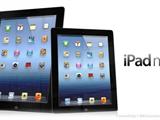Apple tablet market share plunges 10% in Q3
In the third quarter, Apple remained the world's largest tablet manufacturer, but its market share dropped from 40% to 30%.
Beijing time, October 31st morning news, American market research company IDC released a report on Wednesday indicating that in Q3 of 2013, Apple held 29.6% of the global tablet market share, down from 40.2% last year, yet still surpassing Samsung’s 20.4%, retaining its top position globally.
In the third quarter, global tablet shipments increased to 47.6 million units, slightly below IDC expectations, but still showing a quarterly growth of 7.0% and a year-over-year increase of 36.7%.
IDC data shows that due to stagnation in iOS growth and Windows tablets failing to attract consumer attention, Android remains the primary driver of growth in the tablet market.
Without new iPads to boost sales in the second or third quarters, Apple's tablet shipments decreased from 14.6 million units in Q2 to 14.1 million units in Q3. Year-over-year, iPad shipment growth was less than 1%.
The slowdown in Apple's growth is partly due to delaying the iPad release from earlier in the year to the fourth quarter, which also caused the company's global tablet market share to fall to a historic low of 29.6%. However, the iPad Air shipping on November 1st and the Retina-display-equipped iPad mini releasing later in November are expected to drive strong shipment growth for the company in Q4.
"With two 7.9-inch models starting at $299 and $399 respectively, and two 9.7-inch models starting at $399 and $499 respectively, Apple will appeal to consumers," said IDC analyst Jitesh Ubrani. "While some undoubtedly hope for more aggressive pricing from Apple, the current prices clearly reflect the company's commitment to a high-end strategy. It's worth noting that Apple isn't the only one raising prices on small tablets this product cycle: Google and Amazon both increased the price of their latest generation 7-inch tablets from $199 to $229 to cover the higher costs associated with better screens and more powerful processors."
Samsung once again secured the second place with approximately 9.7 million units shipped, capturing 20.4% of the market. The company's success stems from bundling tablets with other successful Samsung products, including smartphones and TVs. ASUS shipped around 3.5 million units in Q3, taking third place with a 7.4% market share as the manufacturer of the Nexus 7 for Google. Lenovo ranked fourth with 2.3 million units shipped and a 4.8% market share. Lastly, Acer ranked fifth with 1.2 million units shipped and a 2.5% market share.
Notably, manufacturers outside the top five contributed over a third of the tablet shipments in Q3 2013, including big names like Amazon, Microsoft, HP, and Dell, as well as "white-box" vendors selling ultra-low-priced Android devices.
"White-box tablet shipments still represent a large portion of the Android platform," said IDC analyst Tom Mainelli. "These low-cost Android products help bring more consumers into the tablet fold, which is good. However, many of these products use cheap components and uncertified versions of Android, potentially leading to subpar user experiences, limited functionality, and less interaction with the ecosystem. The growth of Android tablets is surprising, but relying solely on shipment numbers cannot guarantee long-term success. There needs to be a sustainable hardware business model, a healthy developer ecosystem, and satisfied end-users."



